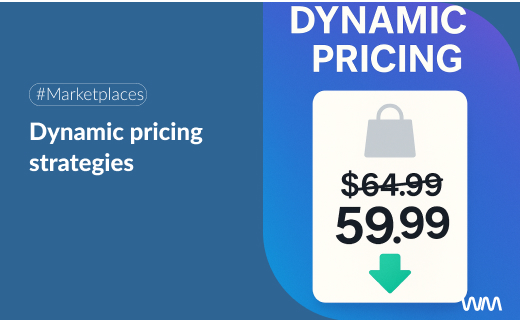Imagine these situations throughout the year:
A rainy day when you desperately need an umbrella because you’re about to go outside. It’s August, sunscreen is running out, and people need protection from the sun. It’s November, and a pair of sneakers forgotten in the warehouse beg for a chance. This back-and-forth of supply and demand, driven by consumer need, is really the essence of what we mean by dynamic pricing: the fluctuation in price that some products experience for various reasons—but always with a purpose behind it.
The key is this: dynamic does not mean arbitrary. There are limits, which in practice translate into two lines drawn in your notebook: a minimum (floor) below which your margin breaks, and a maximum (ceiling) that protects your brand from the temptation of raising prices just for the sake of it. Between the two, sales flow. If, on top of that, you decide the price can’t vary by more than, say, 3% per day, and you’ll only allow two changes in 24 hours, you’ve turned a vague concept into a concrete routine.
The right question is not “how much do I raise?” but “why?”
Five guiding factors
Think about five terms that shed light on the decision. They’re simple but often overlooked:
-
Cost (what it really costs you to sell that unit: product, commissions, logistics).
-
Customer (how much conversion suffers if you tweak the price).
-
Competition (your place in the marketplace showcase, that Buy Box that sometimes feels like musical chairs).
-
Calendar (seasonality, promotions, “back to school,” etc.).
-
Capacity (stock, replenishment, space).
When you look at them together, price stops being just a number and becomes a reasonable conversation between your margin, your demand, and your inventory.
A 48-hour story
Some experts recommend picking two “hero” products and writing a set of simple rules, here is an example:
-
If stock drops below a certain number and conversion rises, adjust +2%, with a weekly cap of +5%.
-
If the loudest competitor is right on my heels, I stay 1% below… as long as the margin holds; if not, I hold firm at the floor.
It’s not a magic formula, but it helps you test, monitor the price acceptance rate (are people still buying?), margin per session, and whether you show up more often in the Buy Box. What works, you keep; what doesn’t, you undo without trauma—like a recipe you can adjust anytime. The outcome of this strategy isn’t the same as a big markdown, but something better: full control over your product pricing.
A race with obstacles: Common mistakes
When implementing a dynamic pricing strategy, certain pitfalls can be easily avoided if you keep the right focus and decision-making mindset. Experts advise paying attention to the following:
-
Only looking at competition. This ends in a price war, and in a price war only the one who withstands the most losses wins.
-
“Changing for the sake of changing.” Adjusting prices five times a day without rules will only confuse potential buyers.
-
Forgetting the customer. If you raise the price, raise the value proposition too (delivery times, returns, service).
-
Not measuring. Without a before-and-after—like a two-week A/B test—it’s impossible to tell. Even simple data tests beat intuition.
-
Relying only on AI at the start. Unnecessary. Sophistication comes naturally when your catalog and data demand it.
A working plan (without technicalities)
Recommendations revolve around starting small with a selection of your catalog. Decide what you want to improve: margin? turnover? visibility? Write down your lower and upper limits (floor, ceiling, maximum variation, frequency). Launch two or three rules related to inventory, competition, and calendar. Let them run for 2–4 weeks and track: margin per session, Buy Box presence, stockouts, returns. Scale what works; park what doesn’t. Keep a log of all experiments: product, date, rule, result.
Experiment without fooling yourself
Dynamic pricing isn’t a rollercoaster. It’s a road with clear signs. Once you know how far you can move—and why—the price stops being scary. And interestingly, so does the margin.
Conclusion
Thanks to dynamic pricing, an ecommerce business can optimize how much to charge for its products. But there’s still the question of optimizing the when. Our solution is here so you can adjust prices daily across marketplaces. How does it work? We connect via API, tell you what percentage you can charge each day, and you start earning without delay. See how it works and grow exponentially.






